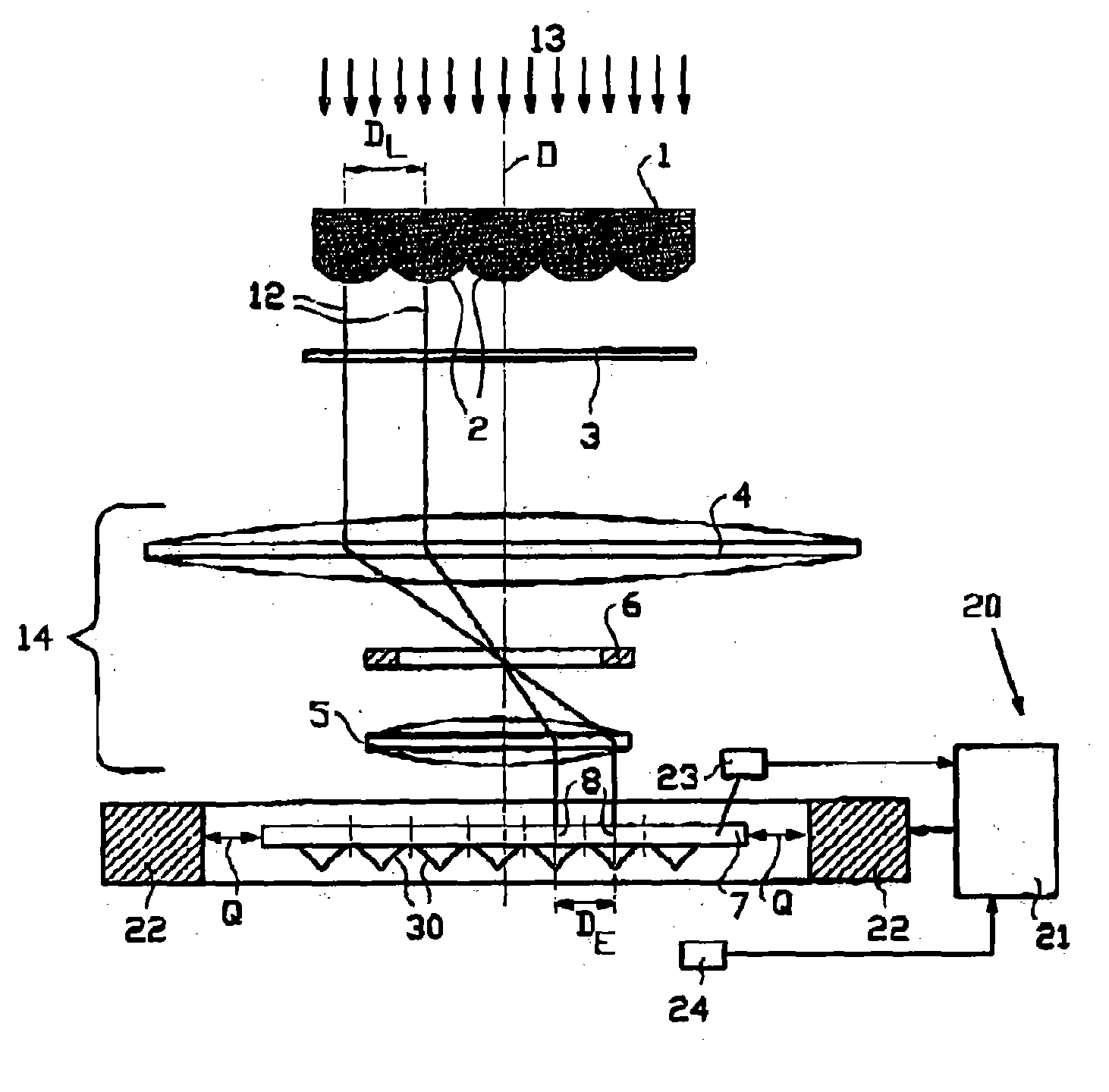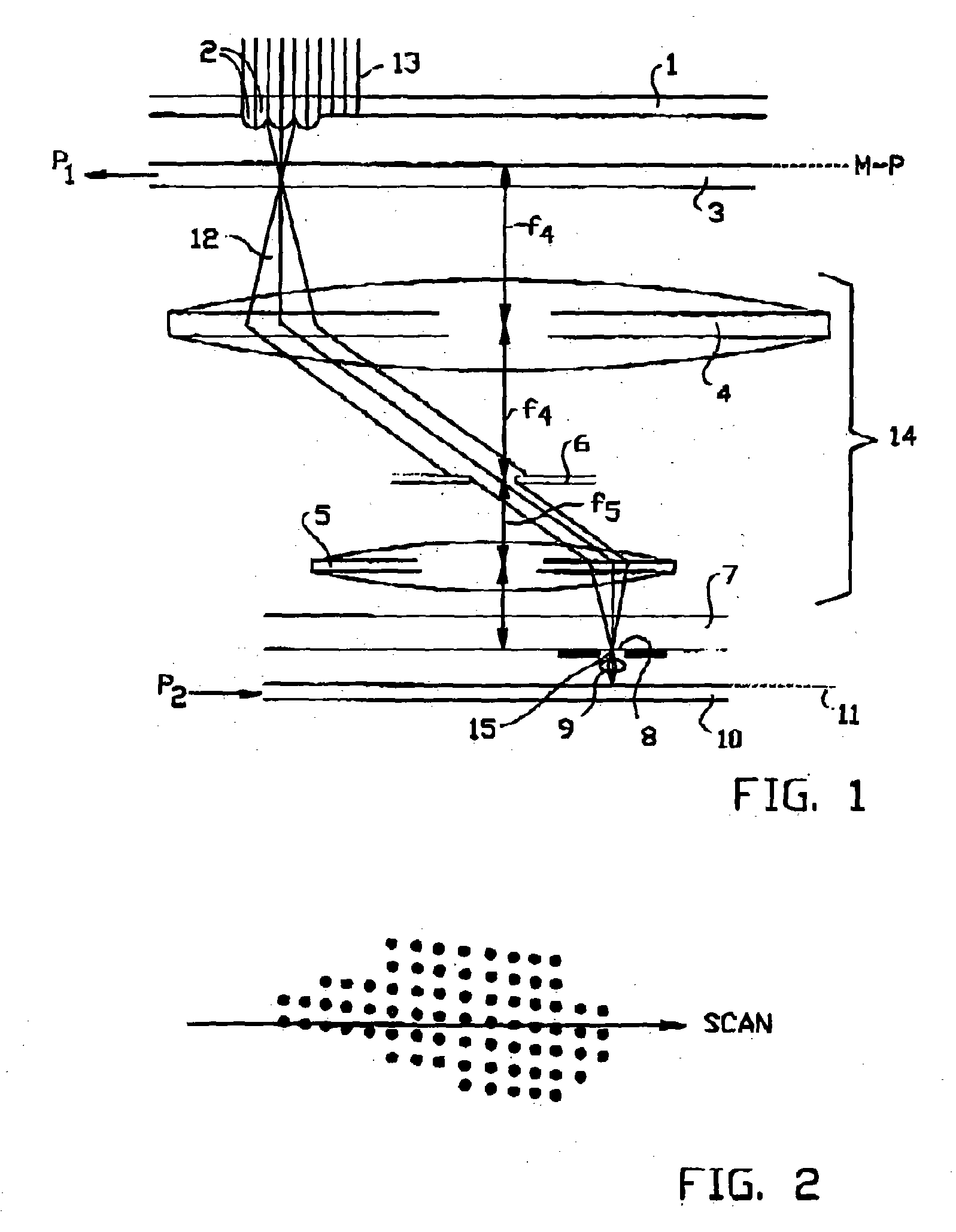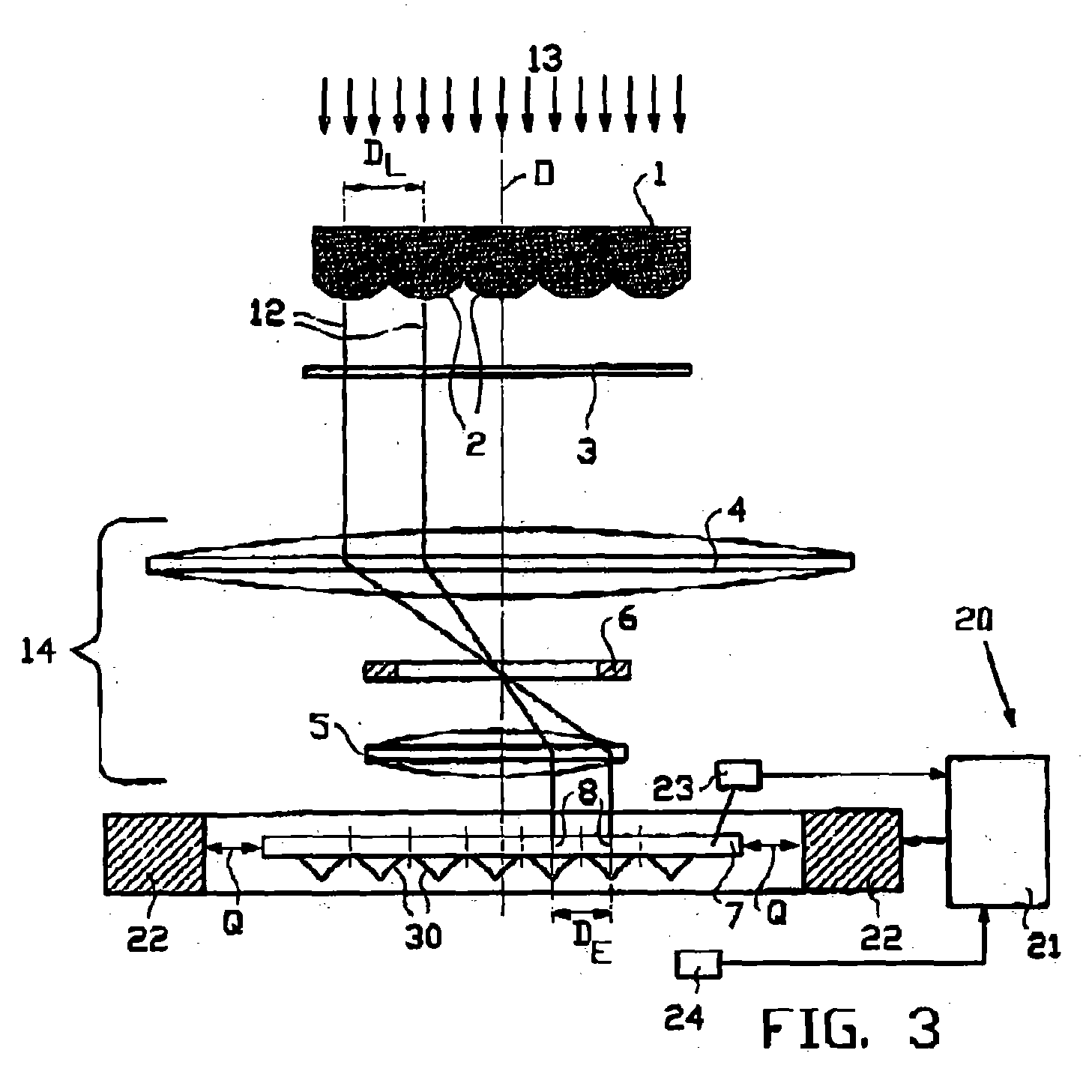Adjustment in a MAPPER system
a mapper and adjustment technology, applied in the field of lithography systems, can solve the problems of affecting affecting the accuracy of the alignment, and putting a heavy burden on the alignment of the different parts of the system,
- Summary
- Abstract
- Description
- Claims
- Application Information
AI Technical Summary
Problems solved by technology
Method used
Image
Examples
first embodiment
[0086] FIG. 3 shows schematically a lithography system according to the present invention, which uses a fine adjustment of the converter by converter-related thermal means. In the converter plate 7, as described in PCT / NL00 / 00657, semiconductor field emitter tips 30 are used as converter elements 8. The adjacent field emitter tips 30 are spaced apart at an element distance D.sub.E, which indicates the intermediate distance between the respective centres of the adjacent converter elements 8. In the micro lens array 1 adjacent lenses 2 are located at an intermediate lens distance D.sub.L, which denotes the distance between the optical axes 26 of adjacent lenses 2.
[0087] The projection of each light beamlet 12 from a respective lens 2 in the micro lens array 1 on the converter plate 7 should largely coincide with a converter element 8. The demagnifying optics 14 must match the lens distance D.sub.L of adjacent lenses 2 in the micro lens array 1 to the element distance D.sub.E of adjace...
third embodiment
[0103] In FIG. 5 the present invention is shown. In this embodiment, the thermal means change the temperature of a mask when present in the lithography system. The system is further equal to the system of FIGS. 3 and 4.
[0104] In a second main embodiment, various specific embodiments of which are shown if FIGS. 6-8, the control means comprise mechanical means for applying mechanical forces to various parts of the system. By applying mechanical forces, it also showed possible to adjust the physical dimensions of various main components of a MAPPER system. Again, identical reference numerals show identical components.
[0105] The basic layout of the embodiments shown in FIGS. 6-8 is identical. A detector 24 measures the deviation of a specific main component, like the micro lens array, the mask or the converter. A controller 21 compares the measured values with the desired values. The controller further comprises, in its memory, information regarding the response of that specific main co...
PUM
| Property | Measurement | Unit |
|---|---|---|
| diameter | aaaaa | aaaaa |
| spot size | aaaaa | aaaaa |
| spot size | aaaaa | aaaaa |
Abstract
Description
Claims
Application Information
 Login to View More
Login to View More - R&D
- Intellectual Property
- Life Sciences
- Materials
- Tech Scout
- Unparalleled Data Quality
- Higher Quality Content
- 60% Fewer Hallucinations
Browse by: Latest US Patents, China's latest patents, Technical Efficacy Thesaurus, Application Domain, Technology Topic, Popular Technical Reports.
© 2025 PatSnap. All rights reserved.Legal|Privacy policy|Modern Slavery Act Transparency Statement|Sitemap|About US| Contact US: help@patsnap.com



